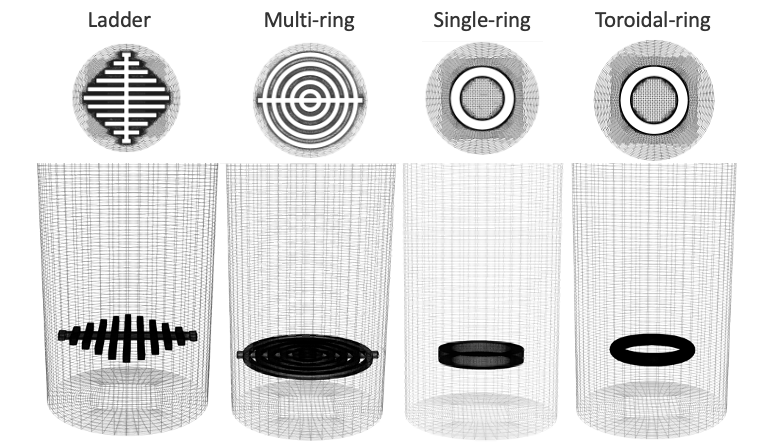(422f) Computational Analysis of Different Sparging Systems and Their Influence in the Fluid-Dynamic Behavior of Bubble Column Reactors.
AIChE Annual Meeting
2023
2023 AIChE Annual Meeting
Engineering Sciences and Fundamentals
Data Science for Complex Fluids and Complex Flows
Tuesday, November 7, 2023 - 4:45pm to 5:00pm
The gas distribution systems in bubble column reactors not only determines operational regime, but also affects the evolution of the BSD, which in turn influences interfacial mass transfer and ultimately the efficiency of the gas-liquid exchange process. In addition to the BSD, uniformity in gas sparging affects gas holdup and bubble residence time which constitute important metrics of performance in gas-liquid systems. In this work, we use computational models to simulate high fidelity representations of different sparger designs and their effect on the operation of a bubble column reactor.
Four different types of spargers have been selected for the computational study (Fig. 1): ladder, multi-ring, single-ring and toroidal. Their effect on superficial velocity, gas holdup mixing efficiency, and BSD will be evaluated in this work. The model uses a multiphase Eulerian framework similar to [1] and include a composition of mixtures of H2/CO/CO2 gases, common in fermentation applications.
Bibliography.
[1]. Rahimi, M., Sitaraman, H., Humbird, D. and Stickel, J., Computational fluid dynamics study of full-scale aerobic bioreactors: Evaluation of gas–liquid mass transfer, oxygen uptake, and dynamic oxygen distribution, Chemical Engineering Research and Design. 2018. 139: 283–295.
Figure 1: Selected sparger designs common in bubble column reactors.
